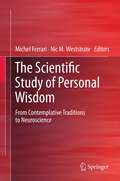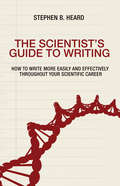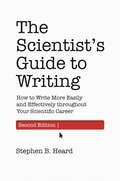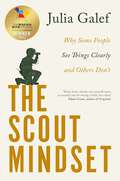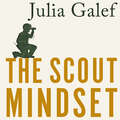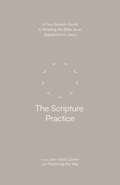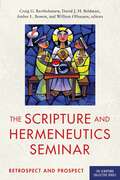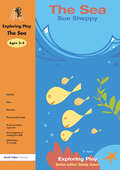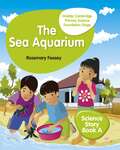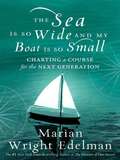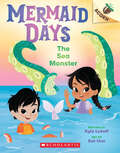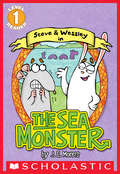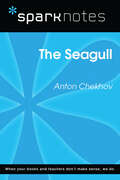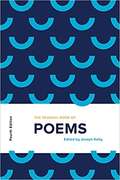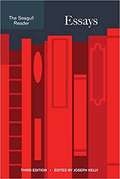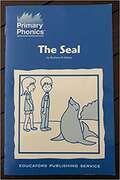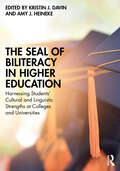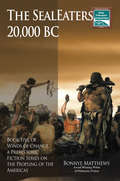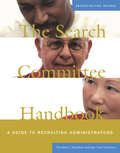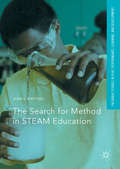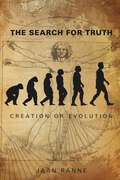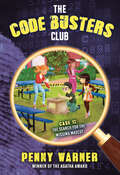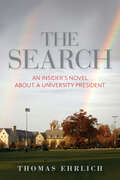- Table View
- List View
The Scientific Study of Personal Wisdom: From Contemplative Traditions to Neuroscience
by Michel Ferrari and Nicholas WeststrateThe rich and diverse contributions to this volume span a wide variety of disciplines, from psychology and philosophy to neuroscience, by some of the most influential scholars in the emerging science of personal wisdom. As such, it is a collection of essential readings and the first publication to integrate both the spiritual and pragmatic dimensions of personal wisdom.The content of the book goes beyond speculative theory to present a wealth of scientific research currently under way in this expanding field. It also describes numerous promising methods now being deployed in the quest for scientific knowledge of the elusive, yet critical, phenomenon of personal wisdom. The book is an excellent introduction to the field for novice researchers as well as a stimulating and enlightening resource for established experts. Its broad appeal makes it a vital addition to the libraries of academics and practitioners in many disciplines, from developmental psychology to gerontology, and from philosophy to contemplative religious traditions such as Buddhism.
The Scientist's Guide to Writing: How to Write More Easily and Effectively throughout Your Scientific Career
by Stephen B. HeardThe ability to write clearly is critical to any scientific career. The Scientist's Guide to Writing provides practical advice to help scientists become more effective writers so that their ideas have the greatest possible impact.Drawing on his own experience as a scientist, graduate adviser, and editor, Stephen Heard emphasizes that the goal of all scientific writing should be absolute clarity; that good writing takes deliberate practice; and that what many scientists need are not long lists of prescriptive rules but rather direct engagement with their behaviors and attitudes when they write. He combines advice on such topics as how to generate and maintain writing momentum with practical tips on structuring a scientific paper, revising a first draft, handling citations, responding to peer reviews, managing coauthorships, and more.In an accessible, informal tone, The Scientist's Guide to Writing explains essential techniques that students, postdoctoral researchers, and early-career scientists need to write more clearly, efficiently, and easily.Emphasizes writing as a process, not just a productEncourages habits that improve motivation and productivityExplains the structure of the scientific paper and the function of each partProvides detailed guidance on submission, review, revision, and publicationAddresses issues related to coauthorship, English as a second language, and more
The Scientist’s Guide to Writing, 2nd Edition: How to Write More Easily and Effectively throughout Your Scientific Career
by Stephen B. HeardAn updated and expanded edition of the acclaimed writing guide for scientistsThe Scientist’s Guide to Writing explains the essential techniques that students, postdocs, and early-career scientists need to write more clearly, efficiently, and easily. Now fully updated and expanded, this incisive primer offers practical advice on such topics as generating and maintaining writing momentum, structuring a scientific paper, revising a first draft, handling citations, responding to peer reviews, managing coauthorships, and more. The ability to write clearly is critical to any scientific career. The Scientist’s Guide to Writing shows scientists how to become better writers so that their ideas have the greatest possible impact.New chapters discuss effective reading, choosing the right journal for your research, and the advantages and disadvantages of posting preprintsProvides additional advice on reporting statistical results, dealing with conflicting peer reviews, managing coauthorships, writing with English as an additional language, and moreEmphasizes writing as a process, not just a productEncourages habits that improve motivation and productivityOffers detailed guidance on submission, review, revision, and publicationIncludes a wealth of new exercises
The Scout Mindset: Why Some People See Things Clearly and Others Don't
by Julia GalefWinner of best smart thinking book 2022 (Business Book Awards)Guardian best books of 2021'Original, thought-provoking and a joy to read' Tim Harford'Highly recommended. It's not easy to become (more of) a scout, but it's hard not to be inspired by this book' Rutger BregmanWhen it comes to what we believe, humans see what they want to see. In other words, we have what Julia Galef calls a 'soldier' mindset. From tribalism and wishful thinking, to rationalising in our personal lives and everything in between, we are driven to defend the ideas we most want to believe - and shoot down those we don't.But if we want to get things right more often we should train ourselves to think more like a scout. Unlike the soldier, a scout's goal isn't to defend one side over the other. It's to go out, survey the territory, and come back with as accurate a map as possible. Regardless of what they hope to be the case, above all, the scout wants to know what's actually true.In The Scout Mindset, Galef shows that what makes scouts better at getting things right isn't that they're smarter or more knowledgeable than everyone else. It's a handful of emotional skills, habits, and ways of looking at the world - which anyone can learn. With fascinating examples ranging from how to survive being stranded in the middle of the ocean, to how Jeff Bezos avoids overconfidence, to how superforecasters outperform CIA operatives, to Reddit threads and modern partisan politics, Galef explores why our brains deceive us and what we can do to change the way we think.'With insights that are both sharp and actionable, The Scout Mindset picks up where Predictably Irrational left off. Reading it will teach you to think more clearly, see yourself more accurately, and be wrong a little less often' Adam Grant
The Scout Mindset: Why Some People See Things Clearly and Others Don't
by Julia GalefWinner of best smart thinking book 2022 (Business Book Awards)Guardian best books of 2021'Original, thought-provoking and a joy to read' Tim Harford'Highly recommended. It's not easy to become (more of) a scout, but it's hard not to be inspired by this book' Rutger BregmanWhen it comes to what we believe, humans see what they want to see. In other words, we have what Julia Galef calls a 'soldier' mindset. From tribalism and wishful thinking, to rationalising in our personal lives and everything in between, we are driven to defend the ideas we most want to believe - and shoot down those we don't.But if we want to get things right more often we should train ourselves to think more like a scout. Unlike the soldier, a scout's goal isn't to defend one side over the other. It's to go out, survey the territory, and come back with as accurate a map as possible. Regardless of what they hope to be the case, above all, the scout wants to know what's actually true.In The Scout Mindset, Galef shows that what makes scouts better at getting things right isn't that they're smarter or more knowledgeable than everyone else. It's a handful of emotional skills, habits, and ways of looking at the world - which anyone can learn. With fascinating examples ranging from how to survive being stranded in the middle of the ocean, to how Jeff Bezos avoids overconfidence, to how superforecasters outperform CIA operatives, to Reddit threads and modern partisan politics, Galef explores why our brains deceive us and what we can do to change the way we think.'With insights that are both sharp and actionable, The Scout Mindset picks up where Predictably Irrational left off. Reading it will teach you to think more clearly, see yourself more accurately, and be wrong a little less often' Adam Grant
The Scripture Documents: An Anthology Of Official Catholic Teachings
by Dean P. Bechard Joseph A. FitzmyerIn order to promote the Church's ongoing efforts to share the boundless riches of the divine Word with the faithful entrusted to its care (Dei Verbum 25), The Scripture Documents reproduces in one volume key documents that record Catholic teaching on the interpretation of the Bible. Intended as a reference work, this collection of conciliar, papal, and curial documents on sacred Scripture includes for each official document a brief historical introduction that facilitates a contextual understanding of each document, a running annotation, and a select bibliography of available commentaries and related works. Like the Canon of Scripture itself, this collection includes various kinds of documents authored by different Roman ecclesiastical authorities within the Church's Teaching Office and expressed in several different literary forms. Each document addresses issues and problems peculiar to the historical situation in which it was written. The Scripture Documents provides easy access to those official documents that record some of the Church's efforts to promote and guide the study of the Bible among the faithful. The teaching these instructions convey is helpful for all who seek to read and interpret the Scriptures in the light of faith. . . .destined to be a scholar's manual. Grace & Truth Dean Bchard has performed a wonderful service in compiling this collection of official Catholic conciliar, papal, and curial documents pertaining to the Bible. His well chosen and well presented anthology shows how the Scriptures have been and are read in the Catholic church. These authoritative texts will be of great interest not only to biblical specialists, theologians, and church historians, but also to all who want to understand what Catholics think about the Bible and how they interpret it. Daniel J. Harrington, S.J. Weston Jesuit School of Theology Cambridge, Massachusetts For some decades English-speaking students of the Bible have lacked a convenient anthology of important Catholic Church pronouncements. The present collection, very ample in scope, admirably fulfills this need. The documents are judiciously selected and in many cases given in fresh and reliable translations. The editor?s bibliographical notes will be of great assistance to scholars. Avery Cardinal Dulles, S.J. Laurence J. McGinley Professor Fordham University This collection of documents and bibliographies is an excellent resource for understanding the development of Catholic approaches to Scripture. The Catholic Biblical Quarterly A collection of conciliar, papal, and curial documents that record official church teaching on the reading and study of Scripture. The conciliar section includes documents from the Council of Trent and Vatican I and II. The papal documents begin in 1893 with Leo XIII's Providentissimus Deus and include five statements of John Paul II. The curial documents concentrate on the Pontifical Biblical Commission. Footnotes, bibliographies, and indexes provide valuable scholarly tools.
The Scripture Practice: A Four-Session Guide to Reading the Bible as an Apprentice to Jesus
by Practicing the Way John Mark ComerLearn how to sit at the feet of Jesus through pages of Scripture in this guide from New York Times bestselling author John Mark Comer and the team at Practicing the Way.In an impatient, hurried, and quick-to-critique culture, Scripture can seem dry and tedious—just one more task on our religious to-do list. This approach is tragic because we miss out on the life-giving experience of sitting at the feet of Jesus.But as we learn to read with hearts open to Jesus and with an awareness of Scripture's cultural and literary backdrop, we can experience it as a channel to God. This Companion Guide to the Scripture Practice from Practicing the Way offers spiritual exercises, reflection questions, and guided readings. Featuring four engaging video sessions, the Scripture Practice is designed to be run with your community and is available online for free.This guide will help you: Approach Scripture with the heart of an apprenticeIntegrate the Hebrew practice of biblical meditationEmbrace the cultural and literary depth of Scripture for fruitful study Develop an &“inner library&” through the memorization of ScriptureLearn how to read Scripture in such a way that the presence of Jesus shapes not only your thinking but also the kind of person you become.
The Scripture and Hermeneutics Seminar, 25th Anniversary: Retrospect and Prospect (The Scripture Collective Series)
by ZondervanA celebration of 25 years of the Scripture and Hermeneutics Seminar that features contributions from a diverse lineup of today's most respected scholars.For twenty-five years, the Scripture and Hermeneutics Seminar has produced a steady stream of influential, global, diverse, ecumenical and world-class research and publications that have impacted a generation of scholars now in mid-career, teaching or ministering at various universities, seminaries, divinity schools, or churches around the globe. The volumes of the seminar have resourced countless classrooms and have been cited thousands of times in scholarly research and in the pulpits and Bible studies worldwide.In celebration of the 25th year of the seminar (1997-2022), this compendium reflects on its work and impact. It offers new essays that chart the value of the seminar for biblical interpretation and the needs of biblical interpretation in the future, and includes stories from the formative SAHS community. This volume distills the work of the seminar for a new generation of students, opening to them a gateway to the community and to the resources developed over the past two decades.Tightly organized, carefully arranged and cross-referenced, this volume:Highlights the work of a significant movement in biblical interpretation in the academyCharts a path of biblical interpretation from the past to the futureHelps readers understand the philosophical and theological commitments that undergird biblical interpretationHelps readers construct a theological hermeneutics that yields a deeper, richer reading of ScriptureIntroduces readers to stories of the seminar from scholars and ministers impacted by itThis celebratory volume not only gives a unique perspective on the architecture of biblical interpretation in the first quarter of the twenty-first century, but it is offered in hope of preparing fertile soil for the next generation of women and men to cultivate biblical interpretation for years to come.The volume features essays by Craig Bartholomew, David Beldman, Amber L. Bowen, Susan Bubbers, Jean-Louis Chrétien, Havilah Dharamraj, Bo Lim, Murray Rae, J. Aaron Simmons, Anthony Thiselton, and John Wyatt.
The Sea (Exploring Play)
by Sue SheppyThis exciting topic-based series offers early years practitioners collections of activities based on familiar themes. The activities can be easily implemented and readily incorporated into curriculum planning through links made to the Foundation Stage curriculum. Each book includes: activities that can be used on their own or as part of a themed program ideas for enjoying an all round curriculum approach guidance on expanding existing ideas and resources linked ideas to be carried out at home. The Sea includes themes of seasides, beaches, fish and boats. It provides a wonderful topic for room nursery displays and is a positive theme for boys and girls.
The Sea Aquarium (Hodder Cambridge Primary Science Ser.)
by Rosemary FeaseyExplore, support and consolidate Early Years science themes with a colourful story for ages 4-5, containing key concepts and practice opportunities. • Practise key science concepts with simple question prompts on each page and activities at the end of the book. • Support the science themes covered in Activity Book A and the Teacher’s Pack. The Sea Aquarium How can Rika help the sea turtles? Books in the Hodder Cambridge Primary Science series for the Foundation Stage: Activity Book A – 9781510448605 Activity Book B – 9781510448612 Activity Book C – 9781 510448629 Story Book A The Sea Aquarium – 9781510448636 Story Book B The Toy Box – 9781 510448643 Story Book C Dinosaur Adventure – 9781510448650 Teacher's Pack – 9781510448667 HODDER EDUCATION e: education@bookpoint.co.uk w: hoddereducation.com
The Sea Is So Wide and My Boat Is So Small: Charting a Course for the Next Generation
by Marian Wright EdelmanIn America today, the gap between the rich and the poor is the greatest ever recorded--larger than any other industrialized nation. It has become far too easy to ignore the hardships of millions of children plagued by poverty, poor health, illiteracy, violence, adult hypocrisy, and injustice. As founder and president of the Children's Defense Fund, Marian Wright Edelman knows all too well the suffering of so many of our nation's children, who live every day with adversity most of us can barely imagine. In The Sea Is So Wide and My Boat Is So Small, Edelman asks difficult questions about what we truly value, and looks hard at what we can--and must--do to build a nation fit for all children. With the passion and conviction that have made her our leading child advocate, she calls us all to stand up for the future of America. What have we done and what have we left undone? What lessons can we learn from our past and our present to realize a just and peaceful national and world vision for our children and grandchildren? Marian Wright Edelman challenges all of us--our leaders, our teachers, the faith community, parents, grandparents, and future generations--to end the epidemic physical and spiritual poverty afflicting millions of our children. We can leave our children with a better, safer, and fairer world if we care enough. And we can--and must--do it now.
The Sea Monster: An Acorn Book (Mermaid Days)
by Kyle LukoffVera and Beaker explore the ocean, in this series perfect for beginning readers!Pick a book. Grow a Reader!This series is part of Scholastic's early reader line, Acorn, aimed at children who are learning to read. With easy-to-read text, a short-story format, plenty of humor, and full-color artwork on every page, these books will boost reading confidence and fluency. Acorn books plant a love of reading and help readers grow!Swim along with mermaid Vera and octo-kid Beaker! In these three stories, Vera and Beaker make new friends both big and small. First, they go on a field trip to the tide pools and meet the small animals who live there. Then, Vera and Beaker meet friendly sea monsters, and show them around the town of Tidal Grove! With text from Stonewall Award-winning author Kyle Lukoff, and bright, colorful artwork from artist Kat Uno, Mermaid Days is sure to be every young reader’s favorite new series. Each book also includes a page of nonfiction ocean information; in this book, readers will learn all about tide pools. Balancing easy-to-read text, endless humor and charm, light nonfiction, and a loveable cast of underwater creatures, these laugh-out-loud stories are the perfect fit for new readers!
The Sea Monster: The Sea Monster (Scholastic Reader, Level 1)
by Jennifer E. MorrisSteve and Wessley are back in the hilarious follow-up to THE ICE CREAM SHOP!There is something in the pond. Wessley thinks it's just a stick. But Steve thinks it may be something much scarier....Readers will love the second outing of hilarious duo Steve and Wessley, two friends who always seem to get into the silliest situations!
The Sea Wolf
by Jack LondonThe Sea Wolf is written by Jack London and retold by John Kennet. The Sea-Wolf is a 1904 psychological adventure novel by American novelist Jack London. The book's protagonist, Humphrey van Weyden, is a literary critic who is a survivor of an ocean collision and who comes under the dominance of Wolf Larsen, the powerful and amoral sea captain who rescues him.
The Seagull (SparkNotes Literature Guide Series)
by SparkNotesThe Seagull (SparkNotes Literature Guide) by Anton Chekhov Making the reading experience fun! Created by Harvard students for students everywhere, SparkNotes is a new breed of study guide: smarter, better, faster. Geared to what today's students need to know, SparkNotes provides: *Chapter-by-chapter analysis *Explanations of key themes, motifs, and symbols *A review quiz and essay topicsLively and accessible, these guides are perfect for late-night studying and writing papers
The Seagull Book Of Poems
by Joseph KellyAn inexpensive and portable alternative to bulky anthologies, The Seagull Reader: Plays offers eight classic (and contemporary classic) plays complemented by helpful editorial apparatus, including an introduction to the major concepts of the genre, brief headnotes, annotations where necessary, a glossary of terms, and biographical sketches of the authors.
The Seagull Reader: Essays
by Joseph KellyThe best-priced alternative to full-length readers, The Seagull Reader: Essays offers an attractive blend of classroom favorites and unique, compelling choices in a compact and portable format.
The Seal (Primary Phonics Storybook #Set 2 Book 8)
by Barbara W. MakarA systematic, phonics-based early reading program that includes: the most practice for every skill, decodable readers for every skill, and reinforcement materials--help struggling students succeed in the regular classroom
The Seal of Biliteracy in Higher Education: Harnessing Students’ Cultural and Linguistic Strengths at Colleges and Universities
by Amy J. Heineke Kristin J. DavinThis book brings together the work of those implementing, using, or researching the Seal of Biliteracy (SoBL) in higher education contexts. Book chapters detail how various institutions of higher education (IHEs) are leveraging their state’s SoBL policy and/or the Global SoBL to promote biliteracy within and across communities. In all 50 United States, high school graduates can earn a state SoBL, which is noted on the high school transcript to certify the ability to read, write, speak, and listen in more than one language. An increasing number of IHEs recognize the SoBL, and evidence suggests that such policies can serve as a recruitment tool, boost enrollment in modern language departments, and facilitate placement into modern language coursework. This book provides examples of how IHEs can implement the state SoBL, the Global SoBL, or their own recognition to recognize students’ multilingualism, boost enrollment, enhance practice, and nurture biliteracy in their communities. The research-based examples in each chapter provide robust examples of how IHEs can leverage the SoBL to increase equity and access to higher education for multilingual students.This book targets educators, leaders, policymakers, and researchers interested in collaborating to enhance multilingualism in their communities. Whether working in K-12 schools or IHEs, readers can learn about potential avenues to expand pipelines, partnerships, and possibilities for learners to earn and benefit from a SoBL.
The SealEaters, 20,000 BC: Prehistoric Fiction Series on the Peopling of the Americas (Winds of Change, a Prehistoric Fiction Series on the Peopling of the Americas #5)
by Bonnye MatthewsThe SealEaters, 20,000 BC is the last of the planned books in the Winds of Change Series on the Peopling of the Americas. The time period is the onset of the last Ice Age which ends the Time of Peace and ushers in the Time of War on earth. The Time of War continues today. The novel is a survival story of the Solutreans in southern France/northern Spain. due to advancing ice sheets, seals from the north have beached on their shores and the SealEaters have come to depend on them for their major food source. The SealEaters face advancing ice from the north, warring groups beyond the mountains to the east and south. In search of a new land, a small number of SealEaters travel the arc formed by the ice sheets, eating seals along the way across the Atlantic Ocean to the east coast of what is now North America, a coast very different from what we know today. They survey the land and groups of people living there, trying to find a new living place. There are differences among the Solutreans and the people they meet in the new land when compared to the People in the first four books. The SealEaters' group cohesiveness has disintegrated when compared to the People of the preceding books. The SealEaters, 20,000 BC tells the tale of this effort to find a new land.
The Search Committee Handbook: A Guide to Recruiting Administrators
by Theodore J. Marchese Jane Fiori Lawrence* Reviews of the first edition:"Finally, higher education has an intelligent guide for recruiting administrators--an activity often taken for granted and not always thoughtfully carried out." -- Paul A. Elsner, Maricopa Community College District"The book we've needed ... the Turabian of search." -- James M. Heffernan, State University of New YorkThis >Handbook focuses on administrative searches below the level of the presidency--the searches for vice-presidents, deans, directors, and coordinators for which the appointment of a search committee is the norm. It is written for practitioners--for the institutional leaders who will plan the search, form the committee, and later make the appointment; as well as for the chair and members of the search committee itself. It is intended as a guide and a fund of ideas to promote better, more informed and more effective practice.The second edition of this acclaimed book reflects the extensive changes that have taken place in the hiring climate. Video-conferencing allows travel-free interviewing. The Web permits desktop research and has given rise to the online posting of openings. Federal and state regulations about hiring and employment have grown apace. The use of search firms has expanded from the presidency to other administrative posts. The shift in student demographics is increasing the need for faculty-staff diversity. Perhaps the most significant change is the recent sharp decline in the size of applicant pools for administrative posts. All these factors add up to a different–and more challenging–set of tasks for campus leadership and search committees. To unpack these issues the Atlantic Philanthropies provided a grant to AAHE and the Academic Search Consultation Service to fund a national advisory board, undertake extensive literature reviews, and conduct focus groups and numerous interviews with committee chairs and others. The new edition of this classic and authoritative source of advice for finding, selecting, and appointing the best people to key administrative positions is informed by this extensive research.
The Search for Method in STEAM Education
by Jaime E. MartinezThis book explores various approaches to building a positive interdisciplinary STEAM (science, technology, engineering, arts and math) learning environment, as described by educators across the K-20 educational ladder. Crucial to their success, Martinez finds, is the playful and performatory approach they employ in their teaching. Their practices are creative, improvisational, and inclusive, and are shared in detail through illustrations and interviews. Throughout the book, the author explores a Vygotskian cultural performatory approach to creating interdisciplinary STEAM learning environments, drawing out the history of this approach and its success in fostering collaboration, creativity, leadership, and communication skills, as well as its effect on social, emotional, and cognitive growth in both formal and informal educational settings.
The Search for Truth: Creation or Evolution
by Jaan RanneIs there any scientific merit to the creationist point of view? This book looks at that question in detail and studies the flaws of evolutionary thinking and even the lack of true science in the evolution model. The creation model can be backed up scientifically. The book looks at topics like dinosaurs coexisting with man, the flood, the age of the Earth, and the intelligence of early man.
The Search for the Missing Mascot (The Code Busters Club #12)
by Penny WarnerWill the Code Busters be able to unravel their latest case? Cody, Quinn, Luke, M.E., and Mika are the Code Busters—clever clue hunters with a passion for puzzles. They're excited to participate in the school’s latest competition. But when it takes a turn, the students discover the school mascot is missing. And it’s not the only thing that has disappeared. Someone has stolen the items, but who would do such a thing? The Code Busters team up with unlikely allies as they set out to find the thief. Will they be able to figure out who is responsible for all the damage? And why?
The Search: An Insider's Novel about a University President
by Thomas Ehrlich"Buddy" Knowland was dead, keeled over with a heart attack during the game. Buddy's fans knew him as the most successful football coach in Nebraska State University history. His colleagues knew him as a misogynistic, foul-mouthed bully. Replacing Buddy would be one of the biggest tests that Charlie Rosen, the president of Nebraska State University, would face during his career. How to hire a replacement for the irreplaceable coach? How to keep the university trustees happy? And how to deal with the ghost of Buddy, which keeps hanging around the office? With his job on the line, Rosen must pull out all the stops. All in all, just an average day in the life of a university president.The Search is the first novel written by Indiana University President Emeritus Thomas Ehrlich. Although (almost) entirely fictional, it illustrates the competing pressures faced daily by university presidents around the country particularly as they struggle to maintain the primacy of academics over athletics.
